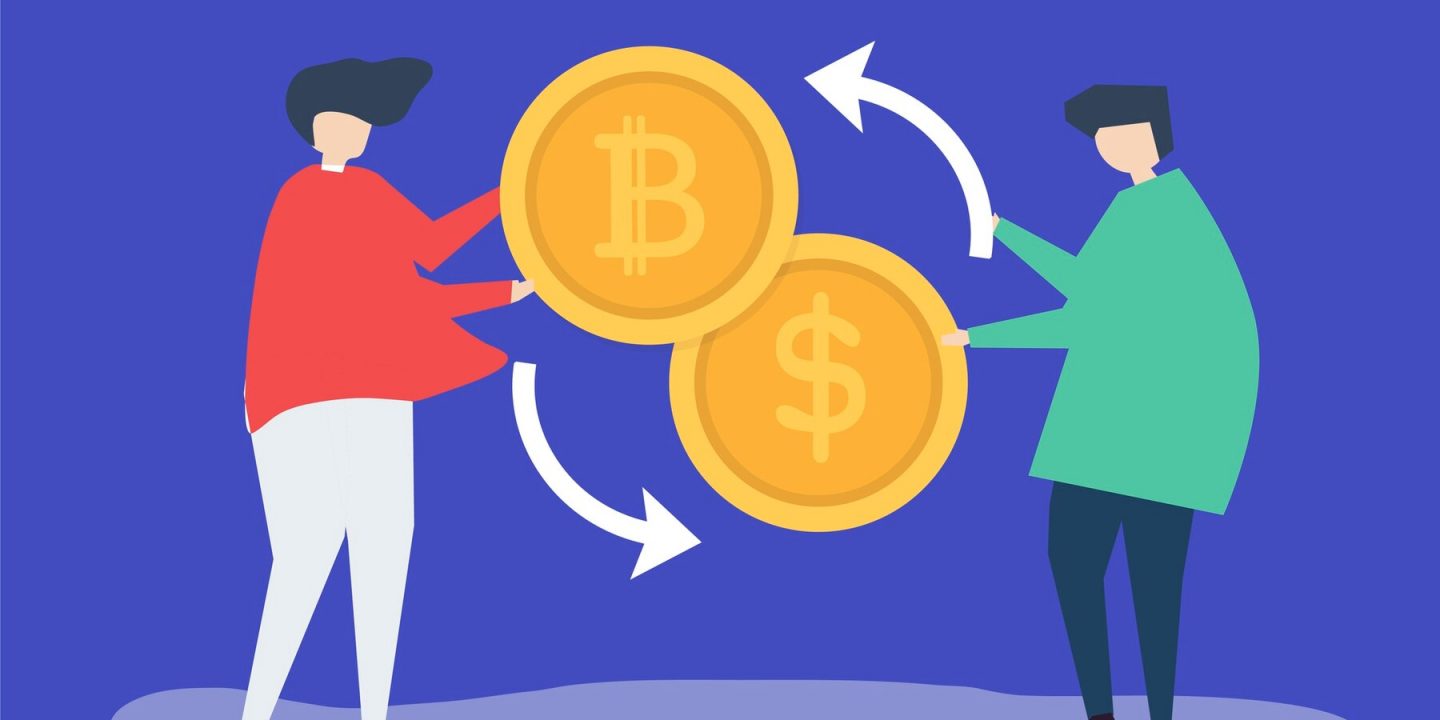
A Bitcoin halving (or halvening) refers to the periodic reduction in the block reward that miners receive for mining new Bitcoin blocks. Bitcoin has a fixed supply of 21 million coins, so as more coins are mined over time, the mining reward is designed to decrease by 50% at predetermined intervals to control the overall supply. When Bitcoin was first launched in 2009, the mining reward was 50 BTC per block. In keeping with the protocol’s design, the mining reward is cut in half every 210,000 blocks, which occurs approximately every 4 years. So far there have been two Bitcoin halvings:
- The first halving occurred on November 28, 2012, reducing the mining reward from 50 BTC to 25 BTC.
- The second halving took place on July 9, 2016, further reducing the mining reward to 12.5 BTC.
Halvings are significant events for Bitcoin because they reduce the rate at which new bitcoins enter circulation, serving to control inflation. This gradual reduction in supply helps to sustain Bitcoin’s value and make the cryptocurrency deflationary in the long run. The third Bitcoin halving is expected to take place in 2024.
History of Bitcoin Halvings
The Bitcoin network has a built-in mechanism to control the supply and issuance of bitcoins over time through what are called “halvings” or “halvenings”. Halvings were designed by Bitcoin’s creator Satoshi Nakamoto as a way to introduce new bitcoins to the system in a predictable way while gradually decreasing the rate of supply.
There have been two halvings so far:
- The first Bitcoin halving occurred on November 28, 2012 at block height 210,000 when the mining reward decreased from 50 to 25 bitcoins.
- The second halving took place on July 9, 2016 at block height 420,000. The mining reward reduced from 25 to 12.5 bitcoins.
Each time a halving occurs, the rate at which new bitcoins enter circulation gets cut in half. This gradual reduction in issuance is intended to avoid hyperinflation while providing a stable and finite supply over the long-term. Approximately every four years (or every 210,000 blocks), the network will experience another halving event, until the maximum supply cap of 21 million bitcoins has been generated by the year 2140.
What Triggers a Bitcoin Halving?
A bitcoin halving is triggered by the blockchain’s programmed scarcity. When bitcoin was created, the code was written to ensure that only 21 million bitcoins would ever exist.
To ensure this scarcity, the bitcoin protocol has a rule hardcoded into it that causes the bitcoin mining reward to be cut in half every 210,000 blocks mined, or approximately every four years. This event is called a “halving” or “halvening” because it cuts the mining reward in half.
The first halving happened on November 28, 2012, when the mining reward dropped from 50 bitcoins per block to 25 bitcoins. The second halving took place on July 9, 2016 and saw the reward fall to 12.5 bitcoins. The third halving occurred on May 11, 2020 and reduced the reward to 6.25 bitcoins.
So in summary, a bitcoin halving happens roughly every four years as a result of the blockchain’s programmed scarcity. The interval is not exact, since it depends on how quickly blocks are mined, but the code ensures the halving takes place every 210,000 blocks to control the overall bitcoin supply.
Impact on Mining Rewards
The bitcoin mining reward is the amount of bitcoin that miners receive for validating transactions and creating new blocks on the blockchain. Originally, in 2009, the mining reward was set at 50 BTC per block. However, Satoshi Nakamoto, bitcoin’s creator, designed bitcoin’s code to go through periodic reward halvings in order to control monetary inflation.
When bitcoin first launched, 50 BTC were awarded to miners for each block mined. The first halving occurred in November 2012, dropping the mining reward to 25 BTC per block. The second halving took place in July 2016, further reducing the block reward to 12.5 BTC. Most recently, in May 2020, the third halving occurred which cut the mining reward in half again to 6.25 BTC per block.
Each halving decreases the rate at which new bitcoin enters circulation, mimicking traditional resources like gold. There are only 21 million total bitcoin that can ever exist, and halvings ensure that it takes longer for all bitcoin to enter circulation and that the supply does not flood the market. As the reward continues decreasing over time, the scarcity of bitcoin increases.
The next halving is estimated to take place in early 2024 based on current projections, reducing the block reward to approximately 3.125 BTC. Halvings will continue occurring approximately every four years until the maximum supply of 21 million bitcoin has been generated, estimated to occur around the year 2140. As the block reward continues decreasing, transaction fees will play a larger role in incentivizing miners to continue validating transactions and securing the network.
Impact on Mining Difficulty
The Bitcoin network automatically adjusts the mining difficulty every 2,016 blocks, or approximately every 2 weeks. This difficulty adjustment aims to maintain a consistent block production time of 10 minutes.
Around the halving, the network hashrate usually drops as some miners shut down unprofitable hardware. This causes blocks to be mined slower than the target rate. The network responds by lowering the mining difficulty to compensate.
After the halving, the reduced block reward incentivizes miners to upgrade to more efficient hardware in order to remain profitable. This causes the hashrate to rise again. With more computing power on the network, blocks start getting mined faster than 10 minutes. The difficulty is then increased to bring the block time back to the target.
This interplay of hashrate and difficulty ensures a smooth adjustment around halvings. Although block rewards drop sharply, the subsequent difficulty decrease helps cushion the blow for miners. The network continues functioning as intended, with blocks produced every 10 minutes on average.
Over the long run, the recurring halvings make mining progressively more difficult and competitive. The periodic difficulty adjustments enable this transition while maintaining the essential 10-minute block time.
Impact on Hashrate
The Bitcoin halving has a noticeable impact on the network’s hashrate in the short-term. As the block reward gets cut in half, mining Bitcoin becomes less profitable. This leads some miners, especially those with older/less efficient hardware, to unplug their machines if revenues no longer cover costs.
In the months following previous halvings, the hashrate has dropped between 20-35% before recovering. For example, the 2016 halving led to a 35% drop in hashrate in the 6 months after. The 2020 halving resulted in a 20% hashrate reduction in the 3 months following.
However, the hashrate drop is usually temporary. After the less profitable miners shut down, difficulty adjusts to account for less competition. The remaining miners benefit from the difficulty decrease, making mining profitable again. New generation ASICs also boost efficiency. Within 6-12 months, hashrate recovers to pre-halving levels or even higher.
The temporary hashrate drop does have implications for transaction speeds and fees until difficulty readjusts. But network security is not compromised long-term, as the hashrate bounces back once mining profits improve post-halving. The halving’s reduction of new supply also helps counterbalance its impact on mining incentives.
Impact on Price
Bitcoin’s price has historically seen significant increases around halving events. In the months preceding and following previous halvings in 2012 and 2016, Bitcoin’s price surged dramatically.
For example, in the year after the 2012 halving, Bitcoin’s price rose from around $12 to over $1,100. After the 2016 halving, Bitcoin’s price climbed from about $650 to nearly $20,000 within 18 months.
Many analysts believe these price rises are tied to the halving’s impact on Bitcoin’s supply and demand dynamics. With the block reward cut in half, fewer new bitcoins enter circulation, while adoption and demand keep increasing. This supply shock often leads to speculation and can drive prices higher.
Predictions for the 2020 halving have been similarly bullish, with some estimates suggesting Bitcoin’s price could reach $100,000 or more in 2021-2022. However, price predictions are always speculative, and real-world market dynamics are complex. While historical patterns suggest the halving could spur significant price appreciation over the next 12-24 months, there are no guarantees. The interplay between supply, demand, investor sentiment and other factors will ultimately determine if history repeats itself.
When is the Next Halving?
The Bitcoin network has a predetermined schedule for how many bitcoins will be created, with halvings occurring roughly every 4 years. Based on the timing of previous halvings, the next halving can be estimated to occur sometime in early 2024.
The first Bitcoin halving took place on November 28, 2012 when the block reward dropped from 50 BTC to 25 BTC. The second halving occurred on July 9, 2016 when the reward decreased from 25 BTC to 12.5 BTC.
The most recent halving happened on May 11, 2020, reducing the block reward from 12.5 BTC to 6.25 BTC where it currently stands. Based on these dates, the intervals between halvings have been approximately 4 years, 210,000 blocks apart.
At the current rate of block production, the next halving is projected to take place in March or April of 2024. However, the exact date depends on the time between blocks which varies slightly. Overall, the timing will be around 4 years after the previous halving in May 2020.
Some estimates put the next Bitcoin halving occuring between March 22 and April 18, 2024. However, the community will not know the precise date and block height until much closer to the projected time. Regardless, in approximately early 2024, the block reward is set to decrease once again from 6.25 BTC to 3.125 BTC per block.
Long-Term Implications
One of the most important long-term implications of the bitcoin halvings is the effect it has on bitcoin’s total supply and its disinflationary monetary model.
Bitcoin has a fixed maximum supply of 21 million bitcoins. This hard cap on the total supply is one of the key features of bitcoin that makes it appealing as a potential global currency and store of value. The bitcoin network’s issuance schedule and halving events are the mechanisms that allow bitcoin to gradually approach that 21 million limit over time in a predictable fashion.
With each halving event, the bitcoin reward paid to miners gets cut in half. This reduces the rate at which new bitcoin enters circulation. Currently, the bitcoin block reward is 6.25 BTC per block, down from 50 BTC originally. Within a few more halvings, the block reward will decrease to satoshis and eventually reach zero.
Once the block reward reaches zero after 64 total halvings, no more new bitcoin will enter circulation. At that point, likely sometime around the year 2140, the maximum supply of 21 million bitcoin will be reached and bitcoin will become an entirely fixed-supply cryptocurrency.
This gradual reduction in issuance over time gives bitcoin a disinflationary monetary policy. The rate of new bitcoin entering circulation decreases over time, leading to lower inflation rates. This stands in stark contrast to fiat currencies that generally have higher inflation rates over time. The disinflationary model preserves purchasing power and makes bitcoin a potential hedge against rising inflation.
The bitcoin halvings are key events that mark this march towards a fixed, disinflationary monetary system. By halving block rewards, the bitcoin network ensures new supply issuance decays over time while maintaining miner incentives to keep securing the network. This allows bitcoin to follow a transparent and predictable path as it transitions to a fixed-supply currency in the very long run.
Conclusion
Bitcoin halvings are a key event in the Bitcoin network that occur approximately every 4 years. They are a foundational component of Bitcoin’s monetary policy, artificially reducing the supply issuance rate on a predictable schedule.
Halvings directly impact Bitcoin miners, as the subsidy reward for mining new blocks is cut in half each time. This has repercussions across mining economics, typically causing less efficient miners to shut down operations while also driving industry-wide technological improvements to compensate.
For Bitcoin holders, halvings are generally anticipated to be price-positive events based on historical data. With the reduced influx of new supply, basic economic theory suggests halvings could put upward pressure on Bitcoin’s price over the longer-term. However, short-term price reactions have been varied.
Overall, Bitcoin halvings are integral events that help give Bitcoin its distinctive qualities as an asset and form of money. By programmatically limiting new supply issuance on a set schedule, they provide Bitcoin with a transparent monetary policy and hard-capped total supply. This ensures Bitcoin will remain scarce and resistant to inflationary forces over time.









